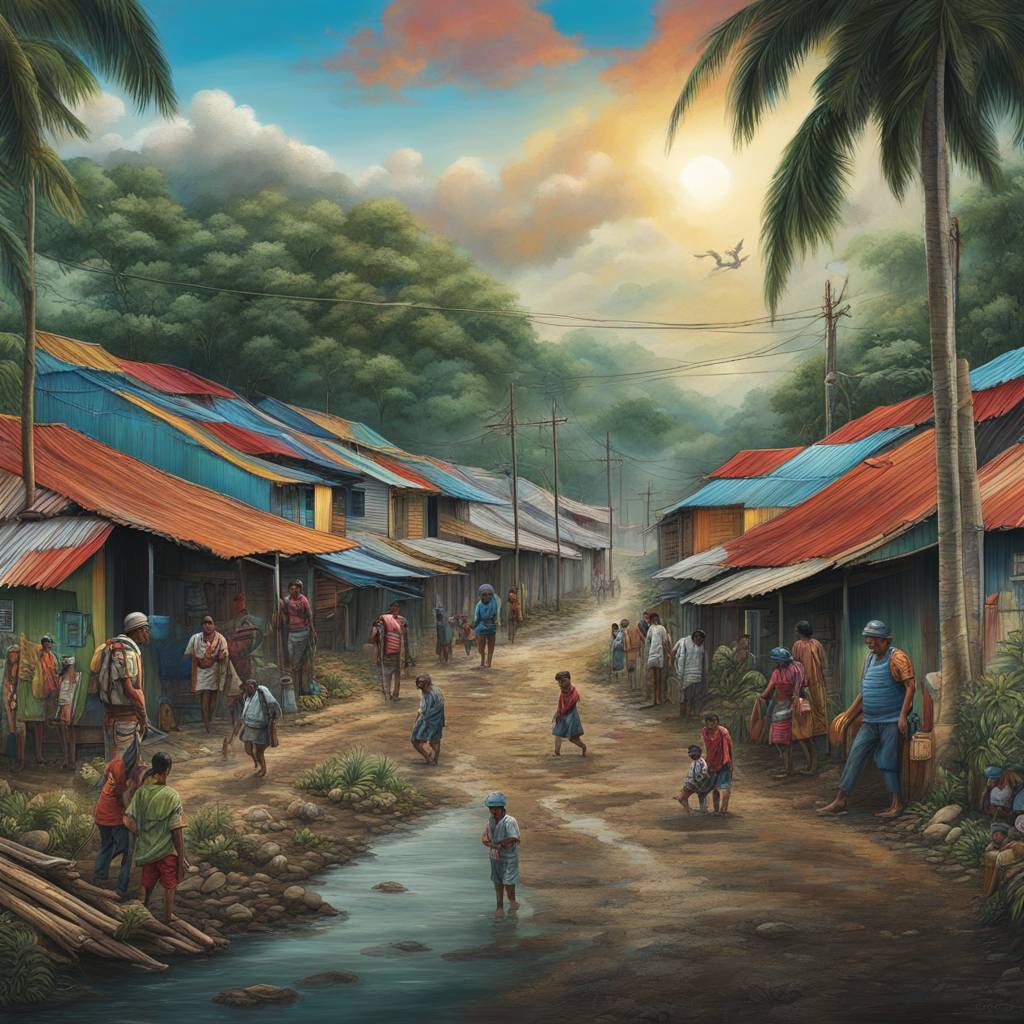Bajo Chiquito, Panama, traditionally a quiet Indigenous community, has been impacted by the sudden surge in migration through the area. Hundreds of thousands of migrants and asylum seekers make their way from Colombia into Panama each year, using the dangerous Darién Gap. The town now receives over a thousand new arrivals every day, overwhelming its small population of 500 permanent residents. The influx has transformed Bajo Chiquito into a bustling hub for migrants, with makeshift tents lining the paths and a booming economy built around providing services to travellers.
Local businesses in Bajo Chiquito are thriving due to the demand from migrants and asylum seekers passing through. Residents are earning tens of thousands of dollars each day by selling food, water, accommodations, electricity, and internet access. The increase in economic activity has allowed locals to invest in their community, with some renovating houses, opening businesses, and expanding services. The demand for labor has prompted the hiring of workers from other parts of Panama to help with servicing the migrants. The economic boom has brought prosperity to Bajo Chiquito, alleviating some of the poverty that the community has faced historically.
While the economic benefits of the migration flow are evident, there are concerns about the impact on the Indigenous culture and way of life in Bajo Chiquito. The community is moving away from traditional agricultural practices to cater to the needs of the migrants, raising worries about a loss of cultural heritage and self-sufficiency. The influx of outsiders has brought outside influences that threaten the preservation of Emberá-Wounaan culture. Concerns about children dropping out of school to work in the booming economy have led to restrictions on child labor and changes in the dynamics of the local community.
The surge in migration has strained Bajo Chiquito’s limited infrastructure, with no sewage system, electricity network, or adequate healthcare facilities to support the sudden increase in population. The lack of investment in the region has left the community struggling to cope with the demands placed on its resources. Issues like pollution from waste, defecation in the river, and health concerns highlight the challenges faced by Bajo Chiquito in managing the crisis on its own. Despite the challenges, community leaders and experts are working to address the pressing issues and provide support to both residents and migrants passing through.
As the flow of migration through Bajo Chiquito shows no signs of slowing down, community leaders and experts fear the long-term implications for the town. The economy that has thrived on servicing the migration flow may face challenges once the influx subsides. The changing dynamics of Bajo Chiquito raise questions about its ability to return to its previous way of life and the impact of the unprecedented migration flow on its future. Despite the uncertainties, residents of Bajo Chiquito have shown compassion and solidarity with the migrants, offering help and support to those in need. The shared humanity between residents and migrants has created a sense of unity in the face of a challenging situation.


